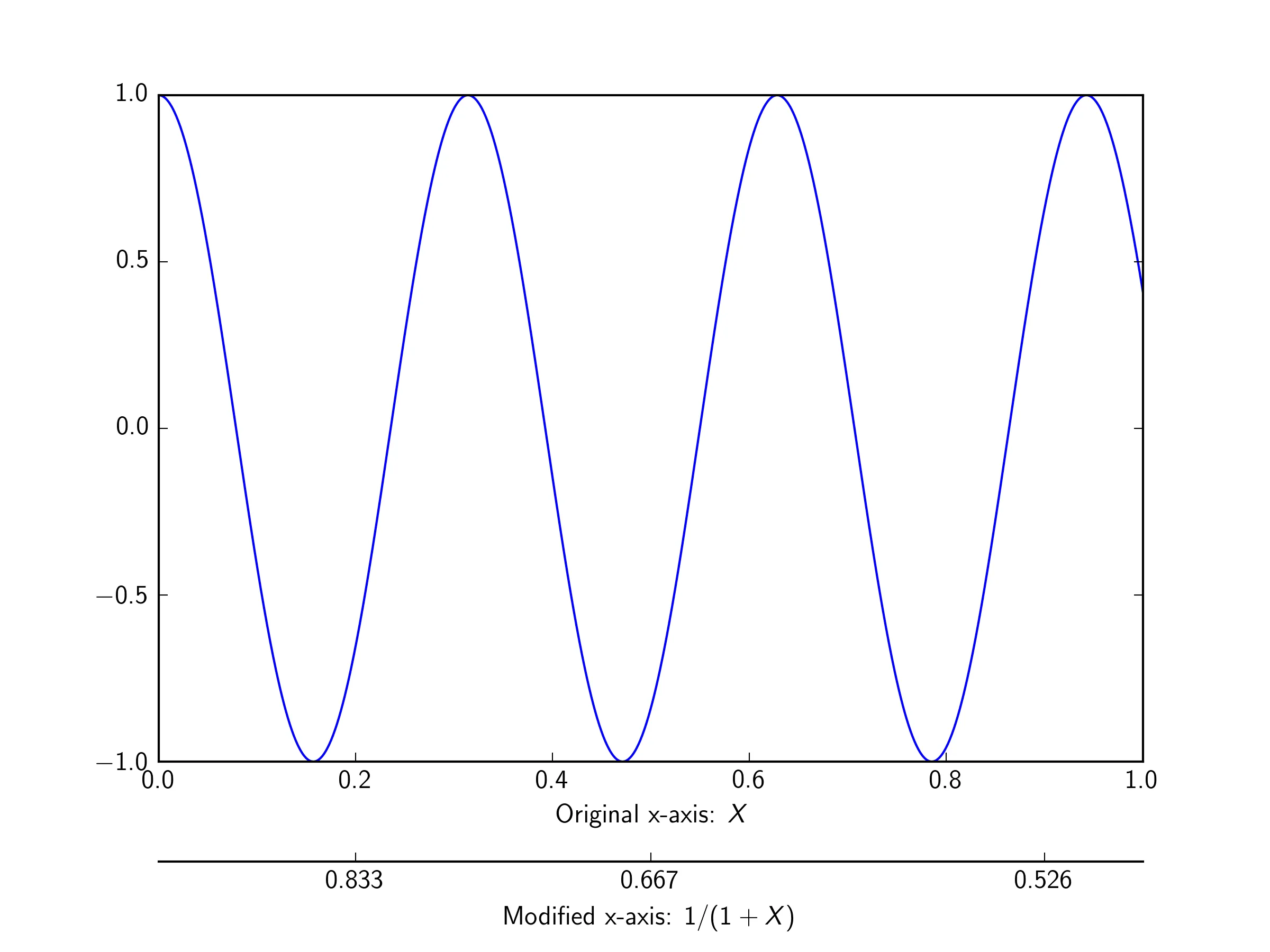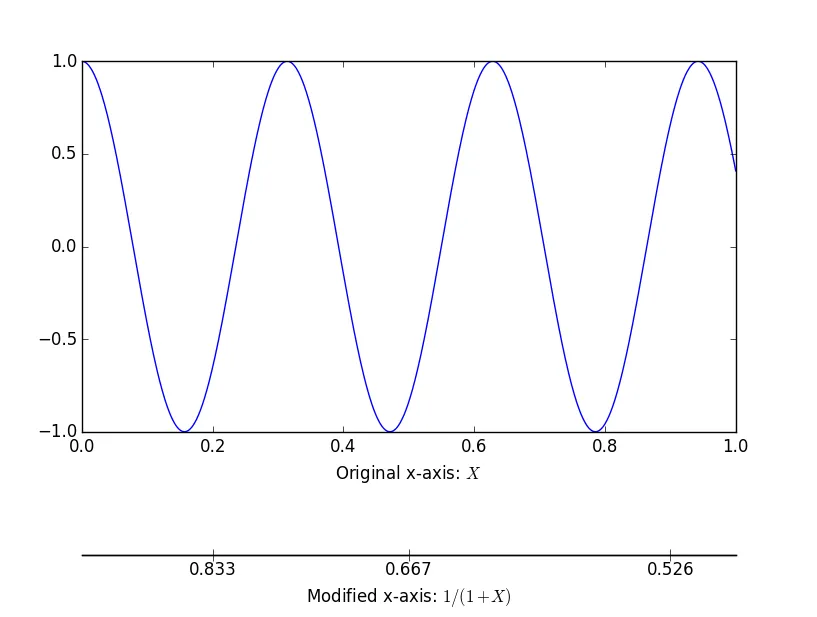我指的是已经提出的问题,可以在 这里 查看。
在这个例子中,用户通过将第二轴添加到图形的上部与标题重合来解决了第二轴的问题。
问题: 是否可以在第一个轴底部添加第二个 x 轴?
代码:
在这个例子中,用户通过将第二轴添加到图形的上部与标题重合来解决了第二轴的问题。
问题: 是否可以在第一个轴底部添加第二个 x 轴?
代码:
import numpy as np
import matplotlib.pyplot as plt
fig = plt.figure()
ax1 = fig.add_subplot(111)
ax2 = ax1.twiny()
X = np.linspace(0,1,1000)
Y = np.cos(X*20)
ax1.plot(X,Y)
ax1.set_xlabel(r"Original x-axis: $X$")
new_tick_locations = np.array([.2, .5, .9])
def tick_function(X):
V = 1/(1+X)
return ["%.3f" % z for z in V]
ax2.set_xticks(new_tick_locations)
ax2.set_xticklabels(tick_function(new_tick_locations))
ax2.set_xlabel(r"Modified x-axis: $1/(1+X)$")
plt.show()


for sp in ax2.spines.values():。 - ali14ax2.set_xlim(ax1.get_xlim())- fanyulax1.get_xticks()获取new_ticks_location时,我遇到了正确对齐值的问题,而这个评论解决了我的问题。 - Stef1611